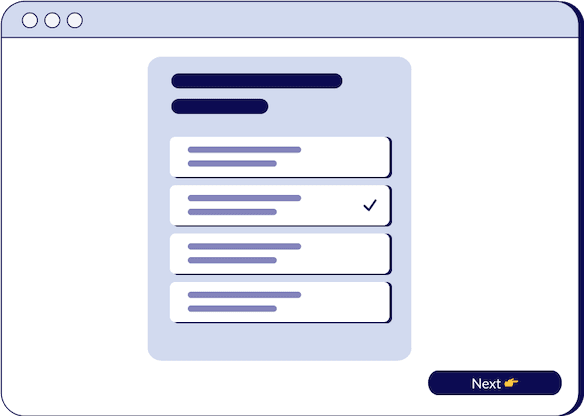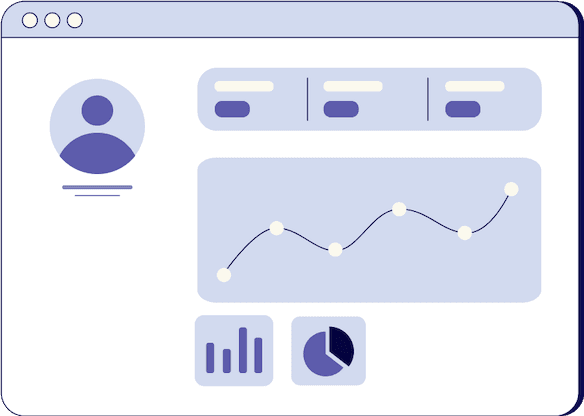
Saas Metrics: The ULTIMATE Guide to Software as a Service Kpis
Jose Cayasso
CEO/Co-Founder

- duration
- 17 min
- Average Score
- 74%
- Stars
- 5
Did you know that Monthly Recurring Revenue (MRR) and Annual Recurring Revenue (ARR) are the lifeblood metrics for any SaaS business? These terms not only reflect the company’s financial health but also its growth trajectory. In this session, we delve into the nitty-gritty of MRR and ARR, shedding light on why these metrics are pivotal for anyone in the SaaS domain.
TL;DR: Key Topics for SaaS Financial Metrics and Strategies
- MRR and ARR: Understand the monthly and annual revenue benchmarks crucial for SaaS business stability and growth.
- Expansion, Contraction, and Reactivation MRR: Manage customer lifecycle changes effectively to optimize revenue.
- Churn Rate Insights: Differentiate between customer and revenue churn to accurately assess business health.
- Lifetime Value (LTV) vs. Cost of Acquisition (CAC): Ensure sustainable business growth by balancing the cost of acquiring customers with the revenue they generate.
- Cohorts Analysis: Utilize cohorts analysis to gain detailed insights into customer behavior and revenue trends over time.
MRR is essentially the engine that drives SaaS companies, representing the total predictable revenue generated from subscriptions each month. It's a dynamic figure that can fluctuate based on new sign-ups, upgrades, downgrades, and cancellations. Understanding MRR helps in assessing the company's current performance and forecasting future revenue.
ARR, on the other hand, is MRR projected over a year, providing a broader view of the company's annual earning potential. It’s critical for long-term planning and investment decisions. Both MRR and ARR offer invaluable insights into the business's financial stability and are often used to attract investors by showcasing predictable revenue.
Key Points to Remember
- Do: Regularly monitor MRR and ARR to gauge your SaaS business’s financial health.
- Don't: Overlook the impact of customer actions (like upgrades or cancellations) on MRR and ARR.
Expansion, Contraction, and Reactivation MRR
Now, let’s talk about the dynamics of MRR changes, including expansion, contraction, and reactivation. Expansion MRR comes from existing customers who decide to upgrade their plans or purchase additional services, indicating customer satisfaction and product value.
Contraction MRR, conversely, results from customers downgrading their plans or reducing their subscriptions. It’s a sign that some aspects of the service may not be meeting customer expectations. Reactivation MRR refers to the revenue regained from previously churned customers who decide to rejoin, showcasing the business's ability to re-attract lost users.
Understanding these facets of MRR gives a comprehensive view of how different customer behaviors influence overall revenue.
Decoding Churn Rate: Customer and Revenue Churn
Churn rate is a critical metric in SaaS, representing the percentage of customers or revenue lost over a certain period. But it's not just about lost customers; it's about understanding the lost revenue, differentiating between customer churn and revenue churn.
Customer churn focuses on the percentage of customers lost, while revenue churn looks at the monetary impact of those lost subscriptions. This distinction is crucial for identifying whether losing big or small customers predominantly influences revenue shifts.
Net Revenue Churn, including expansions and contractions, provides a net effect of revenue gains or losses, offering a more nuanced insight into business performance.
Calculating Lifetime Value (LTV) and CAC
The final piece of the SaaS financial puzzle is understanding the Lifetime Value (LTV) of a customer against the Cost of Acquisition (CAC). LTV estimates the total revenue a business can expect from a customer over their relationship, while CAC involves the expenses incurred to acquire each customer.
A healthy SaaS business model suggests that LTV should considerably exceed CAC, ensuring a sustainable and profitable operation. By balancing these metrics, businesses can strategize on spending and investment in customer acquisition and retention.
In conclusion, mastering these SaaS metrics—MRR, ARR, churn rate, LTV, and CAC—enables business leaders to make informed decisions, optimize strategies, and propel company growth. Understanding and monitoring these metrics are key to navigating the competitive landscape of the SaaS industry. Watch this session to deepen your grasp of SaaS financial metrics and bolster your strategic planning prowess.
Expansion, Contraction, and Reactivation MRR Explained
Are you wondering how customer actions impact the financial metrics of a SaaS business? This session explores the concepts of expansion, contraction, and reactivation MRR, crucial for understanding revenue fluctuations in the SaaS model.
Expansion MRR is a sign of business growth and customer satisfaction, occurring when existing customers upgrade their plans or purchase additional services. This positive change indicates that the product or service is valuable enough for customers to invest more.
Contrarily, contraction MRR happens when customers downgrade their plans or decrease the services they utilize, signaling potential dissatisfaction or a lack of need for certain features. Monitoring contraction MRR is vital to identify and address any underlying issues driving customers to reduce their spend.
Reactivation MRR is the silver lining when former customers decide to come back, reigniting their subscription and contributing to the revenue again. This metric is essential as it shows the effectiveness of re-engagement strategies and the enduring appeal of the product or service.
Prioritize Customer Engagement
- Do: Focus on delivering continuous value to encourage upgrades and prevent downgrades.
- Don't: Neglect the reasons behind contractions and churn; use these insights to improve the product or service.
Understanding these components of MRR can provide a nuanced view of how customer behavior directly affects the revenue stream. By tracking these metrics, SaaS companies can more accurately forecast revenue and tailor strategies to enhance customer satisfaction and growth.
Unraveling the Mysteries of Churn Rate
Churn rate is often the make-or-break metric in SaaS, measuring the percentage of customers or revenue lost during a specific period. It’s crucial to differentiate between customer churn and revenue churn to get a clear picture of business health.
Customer churn rate highlights the percentage of customers who have stopped using the service, while revenue churn focuses on the financial impact of these losses. Understanding both metrics is essential for diagnosing the health and sustainability of a SaaS business.
In the context of churn, a lower percentage is always the goal, as it indicates higher customer retention and, consequently, more stable revenue.
Strategic Actions to Mitigate Churn
- Do: Implement retention strategies tailored to customer needs and feedback to reduce churn rates.
- Don't: Ignore churn metrics; they are critical indicators of customer satisfaction and business health.
By dissecting these aspects of MRR and churn rate, businesses can better navigate the complexities of the SaaS financial landscape, fostering strategies that support sustainable growth and customer loyalty. Watch this session to gain actionable insights into managing expansion, contraction, and reactivation MRR effectively, and understanding churn rate’s impact on your SaaS business.
Navigating Lifetime Value (LTV) and Cost of Acquisition (CAC)
Understanding the financial health of a SaaS company extends beyond monthly and annual revenues. It's about how much value each customer brings over their lifetime compared to the cost of acquiring them. In this session, we delve into the crucial metrics of Lifetime Value (LTV) and Cost of Acquisition (CAC) and how they interplay to shape the financial blueprint of a SaaS business.
LTV represents the total revenue expected from a customer during their relationship with the company. It's a projection of the profit attributed to the long-term association with a customer, encapsulating the essence of customer value. A higher LTV indicates a valuable, enduring customer relationship, which is a positive signal for the company's revenue sustainability.
CAC, on the other hand, quantifies the total cost of acquiring a new customer, encompassing marketing, sales efforts, and other related expenses. It’s pivotal for businesses to balance CAC with LTV, ensuring that the cost to acquire a customer doesn't outweigh the revenue they generate.
Balancing the Scale Between LTV and CAC
- Do: Strive for an LTV that is significantly higher than CAC, indicating a healthy, profitable business model.
- Don't: Allow CAC to surge without improving the LTV, as it can lead to financial imbalance and strain on resources.
A sound strategy in SaaS financial management is maintaining an LTV to CAC ratio where LTV is at least three times CAC. This ratio ensures that the business is making a substantial profit from each customer to justify the acquisition cost.
Cohorts Analysis: Deciphering Customer Behavior
Cohorts analysis is a powerful tool in understanding how different groups of customers behave over time. By segmenting customers based on their acquisition period, businesses can gain insights into the longevity and revenue potential of each group, aiding in precise targeting and improved customer retention strategies.
Cohorts analysis helps in identifying trends and patterns in customer behavior, which can inform strategic decisions related to marketing, product development, and customer service. This analytical approach provides a granular view of how retention strategies are performing and where there is room for improvement.
Implementing Strategic Insights
- Do: Use cohorts analysis to pinpoint effective strategies and areas needing enhancement.
- Don't: Overlook the significance of cohorts in understanding the detailed landscape of customer engagement and revenue generation.
In conclusion, mastering the metrics of LTV, CAC, and the art of cohorts analysis is essential for any SaaS company aiming for financial success and operational efficiency. These insights not only help in fine-tuning acquisition and retention strategies but also in making informed decisions that lead to sustainable growth and profitability. By understanding and implementing these financial metrics and analytical techniques, SaaS businesses can navigate their path to success with confidence and clarity. Watch this session to deepen your understanding of these critical SaaS metrics and leverage them for your company's growth.
How Triple Session works
Training, Testing, & Feedback
Triple Session's proven formula accelerates your sales performance through consistent, organized practice, backed by measurable results.

Bite-Sized Knowledge
Our expert-led video sessions simplify complex sales concepts into easy-to-digest 5-15 minute videos for better retention.

Test Your Understanding
After each session, there will be a quiz to test your understanding and help you improve on any areas that need more attention.

Evaluate and Grow
Get progress snapshots after each quiz to track your improvements and achieve your sales mastery goals.